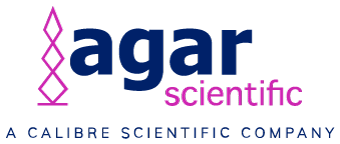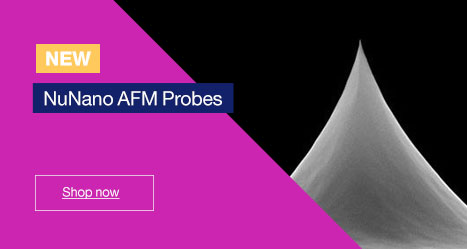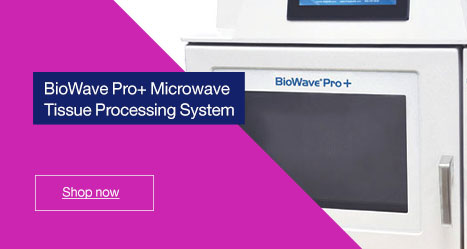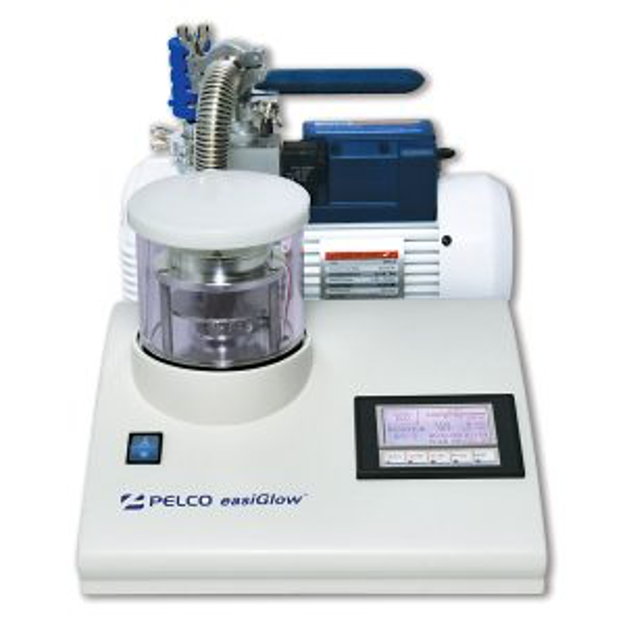

The easiGlow Glow Discharge Cleaning System is a compact, easy-to-use standalone system. It’s designed to modify the wettability of Carbon film on TEM grids and to clean TEM grids. It’s bench mounted, straightforward to set-up with only one click required to complete a fully automated cycle.
The factory-installed program can be used for most applications where a hydrophilic film is required. This can be run immediately after installation just by selecting ‘Auto Run’ on the touchscreen interface. The operator can change the parameters within the factory-installed program and can create four further protocols with parameters to suit specific applications. The protocols can be stored to facilitate consistent and repeatable glow discharge results. The easiGlow is fully controlled through the touchscreen with three modes; auto, programmed and manual.
A complete system can be supplied, including the vacuum pump, or users can use an existing pumping system as long as it meets the required specifications and can fit the easiGlow vacuum port (a KF16 flange vacuum inlet).
With two independent gas ports, it is possible to create a protocol with two different gasses for the glow discharge cycle and venting the chamber when the cycle ends. The easiGlow offers high versatility and freedom to choose the best conditions for optimum results.
This simplified operation and the minimal training required makes the easiGlow particularly useful in multi-user facilities.
Why is it so useful within EM?
The Carbon support films on TEM grids tend to be hydrophobic. However, a glow discharge treatment will make a Carbon film surface negatively charged (hydrophilic), therefore allowing aqueous solutions to spread easily. In this way the whole TEM grid will be covered with sample and agglomeration will be avoided.
The easiGlow can also be used with different parameters to make the Carbon film positively charged, in case of special applications such as DNA analysis. Also, glow discharge treatment of TEM grids removes adsorbed hydrocarbons, therefore cleaning them while making them hydrophilic.
Consequently, easiGlow allows preparation of a good sample to be imaged and analysed by the electron microscope.
Could you explain how the easiGlow works?
A glow discharge is a kind of plasma. A partially ionized gas, consisting of positive or negative ions, electrons together with a large number of neutral atoms, are created inside a chamber under vacuum by applying a high potential (a high DC voltage) between two electrodes.
The easiGlow uses either air, other gas or a small quantity of liquid which under vacuum will sublimate as a source of ions. The electronics automatically control the voltage applied between the two electrodes and the polarity (which electrode is positive and which is negative) in such a way to have a stable current (mA) of discharge and to have the desired ions deposited on the Carbon film. This will give the carbon film an overall positive or negative charge.
All the parameters that characterise the type of glow discharge are software controlled by setting up the program or protocols via the touchscreen. After the Carbon film treatment is finished, a carefully controlled flow of air is released inside the specimen chamber to avoid displacing the grids inside.
How is it used?
The easiGlow is fully automated and controlled from an intuitive touch screen display. Once the grids are loaded into the vacuum chamber, the selected programme controls the vacuum pump, and once the required vacuum is created it initiates the glow discharge process. For routine grid preparation, just one button instigates the complete cycle: vacuum, glow discharge treatment and flushing.
How long does the process take?
For the most common applications, making TEM support films or grids hydrophilic, the automated process takes less than two minutes, from the time it’s turned on to the end of the cycle.
What if both hydrophilic and hydrophobic treatments are required?

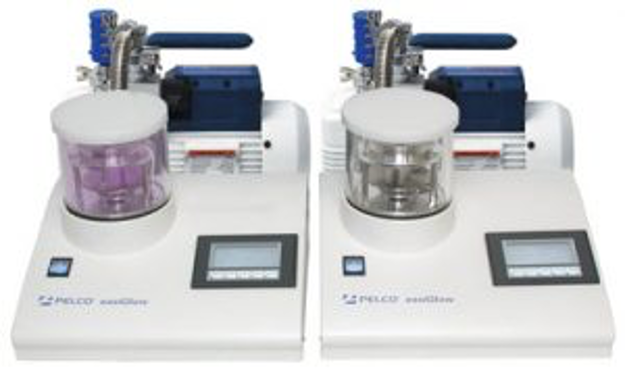
Which Glow Discharge Methods are supported?
EasiGlow supports both hydrophilic and hydrophobic treatments with positive and negative charges, as shown in the table below:
| Surface State | Charge | Treatment | Typical Applications |
| Hydrophilic | Negative | Air | Carbon-coated TEM grids |
| Hydrophilic | Positive | Air (with subsequent magnesium acetate treatment) | Nucleic acid adhesion to carbon films |
| Hydrophobic | Positive | Amylamine (Pentylamine) | Proteins, antibodies and nucleic acids |
| Hydrophobic | Negative | Methanol | Positively charged protein molecules, (e.g. ferritin, cytochrome c) |
What applications is the easiGlow used in?
The easiGlow is used frequently in Cryo-EM and single particle analysis but also where the application requires the Carbon film on TEM grid to be hydrophilic such as analysis of emulsions.
Nucleic acids (DNA) have a negative charge, therefore will be repelled by negative ions deposited by normal glow discharging. Glow discharge with a post-treatment of magnesium acetate provides hydrophilic films with a positive charge for DNA. Alternatively glow discharge using amylamine also provides a positive charge, but with a hydrophobic film.
Where can we see the easiGlow in action?
We can arrange demos, at your premises or at Stansted, set up a fully operational system and run through the process.
Thanks Ben, that’s all very interesting.
